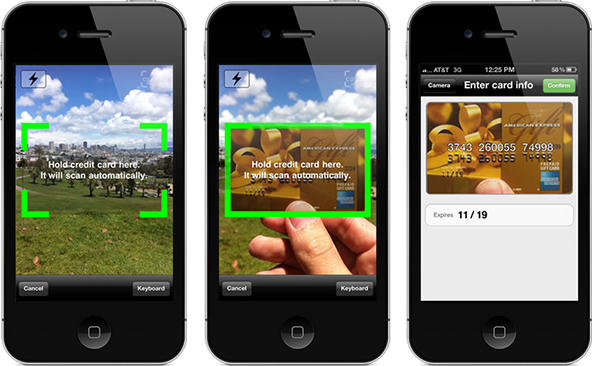What PayPal’s Latest Acquisition Tells Us about Square’s Dominance

PayPal has just acquired yet another mobile payments start-up, the processor told us in a blog post. The name of the company is Card.io, a maker of credit card scanning technology. We don’t know how much PayPal has paid for its latest acquisition, nor do we know whether it has anything specific in mind for it. We do know that Card.io’s technology will remain available for developers, at least for the time being, and that the start-up’s employees will be joining PayPal’s mobile wallet product team.
What about Card.io? Well, even though PayPal probably didn’t have to reach too deep into its pocket in this case, I think that the acquisition was nonetheless the best thing that could’ve happened to the start-up. In fact, I can’t think of any plausible alternative. See, Card.io initially started out as a Square competitor, but could never gain any traction and was eventually forced to scale down its ambitions, exit the payment processing arena and become a provider of technology with a very narrow application. But let’s take a closer look at the story.
Card.io
We did look into the start-up’s offering at the beginning of the year and liked what we saw. Back then, Card.io was offering credit card acceptance at a transaction rate of 3.50 percent + $0.30 for all brands and types of cards and no other fees. Unlike Square, GoPayment or PayPal Here, whose services are all centered on a card reading dongle, what distinguished Card.io was that it didn’t rely on any additional hardware; all you needed was your phone. That simplified the process quite a bit. You would launch the Card.io app and take a picture of your customer’s card, using your phone’s camera. Then the app would read the account information from the image, you would enter the payment amount and submit the transaction for processing. It was really simple.
So we did see a possibility that Card.io could be successful in implementing its idea, but there was a caveat:
[T]he start-up’s success, or lack thereof, will be decided by how favorably its service compares to Square’s, as perceived by users. Of course, to be able to make a comparison, potential users must first learn about Card.io, so how much the newcomer can spend on promoting itself may prove at the end to be the deciding factor.
Back then, a Card.io representative told us in an email that they were working on their rates and other issues “and hopefully will have more news to announce soon.” Looking back, I don’t think that Card.io ever managed to get the word out in any meaningful way.
Square’s Dominance
I wish the Card.io guys did manage to pull it off. We have enough things to carry around on ourselves as it is and doing away with the card reader would have been a welcome development for many of us. As Card.io’s technology clearly demonstrated, you don’t really need a reader when you have a camera. And yet, they were unsuccessful, whereas Square is growing like wildfire. Why?
Well, I think that at the end Square’s financial firepower proved just too overwhelming. Last year the company raised $100 million in funding and earlier this year it was already looking for $250 million more. And the processor has been very busy spending it on advertisement of all sorts. At this point I pretty much can’t go anywhere online without seeing a Square banner in the header or sidebar of the website. Of course, that is a consequence of the fact that I spend much of my time on credit card-related websites and advertisers take my visiting pattern into account when serving their ads. Still, the point is that I’m seeing Square’s ads, not GoPyament’s or some other competitor’s. And Card.io certainly never managed to gain any exposure.
The Takeaway
Square had two big advantages over its competitors when it went live just over a year and a half ago: it was the first company to enable consumers to accept credit cards for payment through their mobile phones and had plenty of money to spend on marketing. And Square did manage to quickly become almost eponymous with mobile card acceptance. No competitor, not even mighty PayPal, has since been able to put as much as a dent into Square’s growth rate. So Card.io’s value proposition may or may not have been worth consumers’ consideration, but it never came to that. The reality was that the start-up was never really on the map.
Image credit: Card.io.


